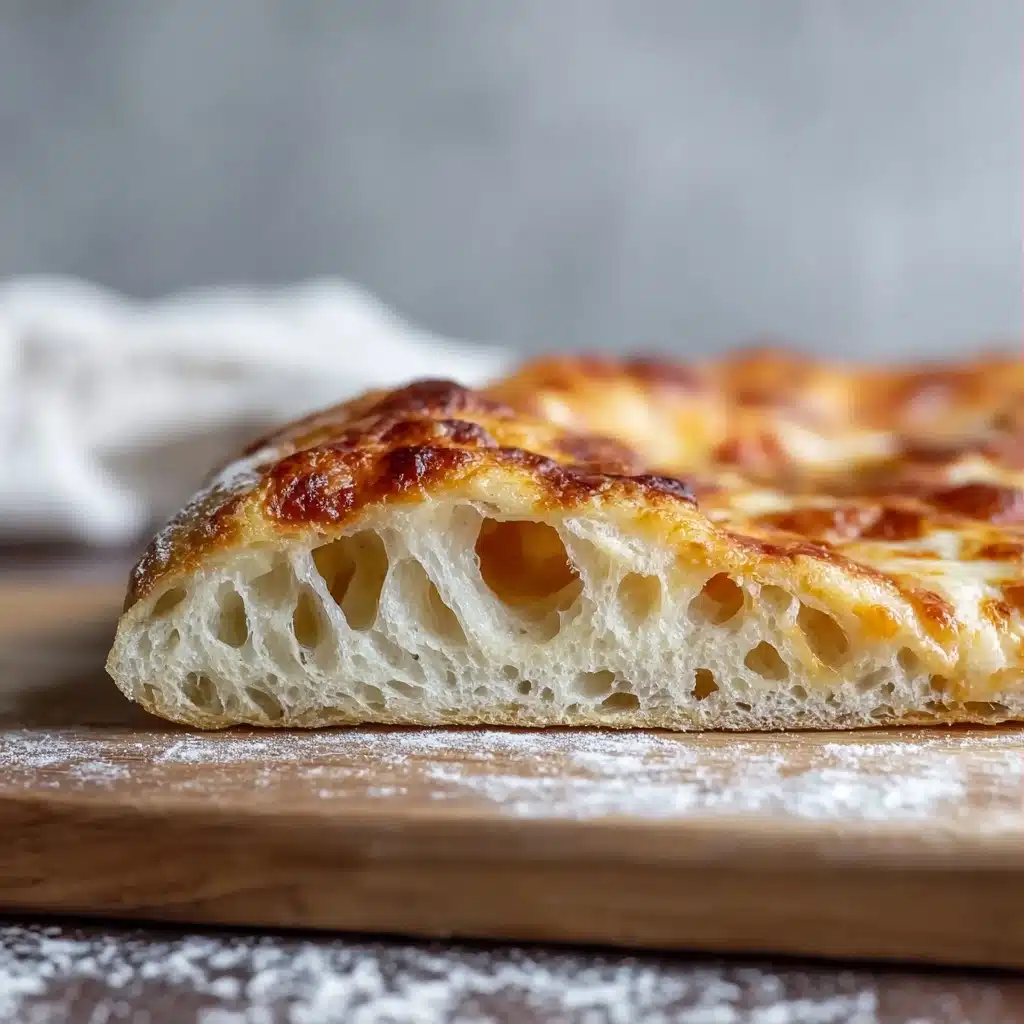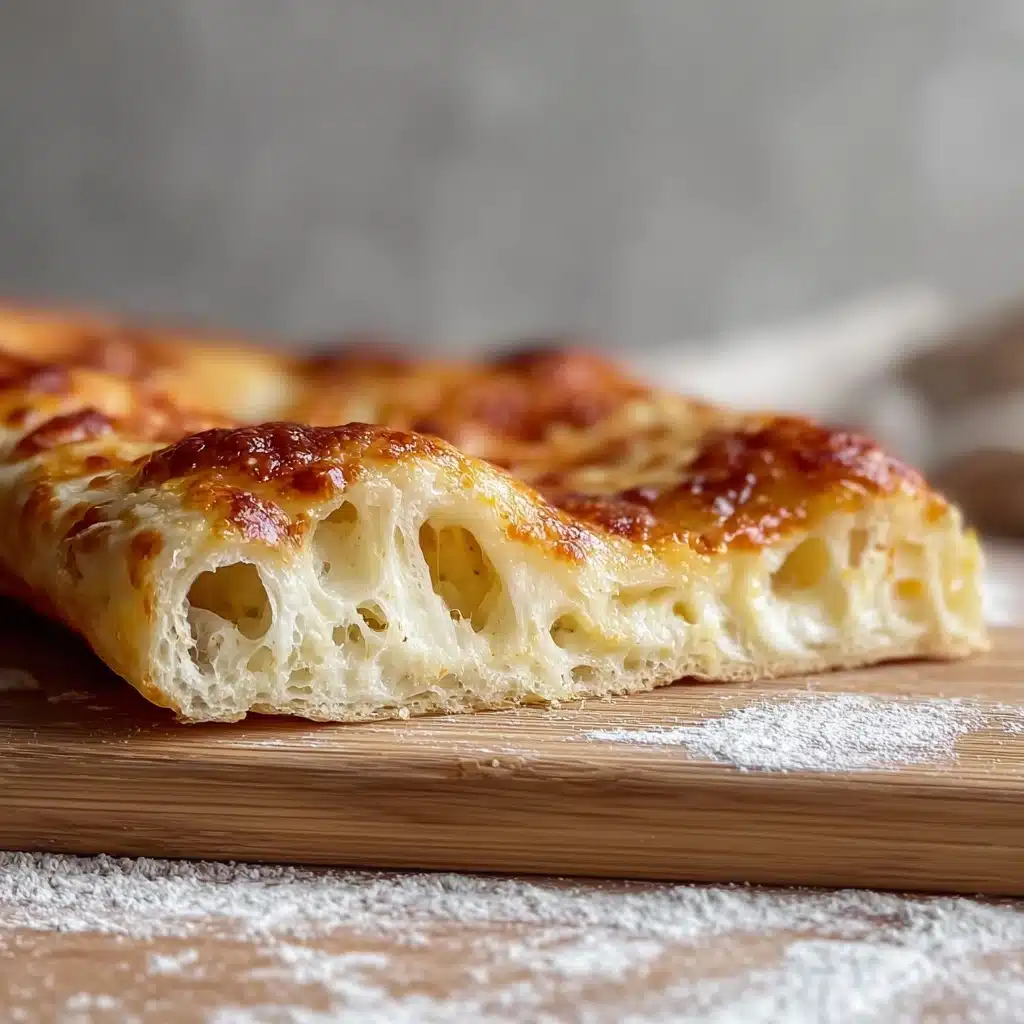The Perfect Artisan Pizza Dough Recipe
If you’ve ever dreamed of crafting a crispy, chewy, and wonderfully airy crust right in your own kitchen, then you’re in for a treat. The Perfect Artisan Pizza Dough is the foundation for pizza night done right, offering that authentic pizzeria-quality texture and flavor that makes every bite irresistible. With just a handful of simple ingredients and a bit of patience, you’ll be well on your way to mastering dough that’s as fun to make as it is to devour.

Ingredients You’ll Need
The beauty of The Perfect Artisan Pizza Dough is in its simplicity. Each ingredient plays a vital role in developing the dough’s incredible texture and flavor, so make sure to have everything ready before you start mixing.
- All-purpose flour (3 ¾ cups plus 2 tbsp / 500g): Provides the structure and chewiness essential to a great dough.
- Warm water (1 ½ cups plus 2 tbsp / 375g): Hydrates the flour and activates the yeast for fermentation.
- Active dry yeast (¼ tsp / 1g): Gives the dough its rise and breathy air pockets.
- Fine salt (1 ½ tsp / 10g): Enhances flavor and helps tighten gluten, adding strength to the dough.
How to Make The Perfect Artisan Pizza Dough
Step 1: Mix Flour and Water
Start by combining most of the warm water with the flour in a large bowl. Stir this mixture until the flour absorbs the water and everything is roughly combined. Cover the bowl and let it rest for about 20 minutes. This rest period is crucial because it lets the flour hydrate fully, which helps develop gluten later for that perfect chew.
Step 2: Activate the Yeast
While the flour is resting, sprinkle your yeast over the remaining warm water and give it a few minutes to dissolve and foam slightly. This activation jumpstarts the yeast’s fermentation process, which is key to that bubble-filled crust we all love.
Step 3: Combine, Fold, and Rest
Once your flour-water mixture has rested, sprinkle the salt over it, pour in the yeast mixture, and gently fold everything together using wet hands. This gentle folding, not aggressive kneading, encourages the formation of gluten strands while keeping the dough light and elastic. Cover your dough and let it rest for about an hour to begin fermenting.
Step 4: Strengthen the Dough
This step is a game-changer. With lightly wet hands, lift and stretch sections of the dough before folding them back onto itself. Rotate and repeat this four to five times to help build a strong, cohesive structure that traps air beautifully during baking. After folding, cover and ferment the dough at room temperature for five to six hours, or refrigerate overnight for a more developed flavor.
Step 5: Divide and Shape
Turn your dough onto a floured surface and gently divide it into two equal portions. Shape each piece into a soft, tight ball by folding edges to the center, then let them rest covered at room temperature for an hour. This final rise relaxes the gluten, making shaping the pizzas easier and ensuring a beautiful crust.
Step 6: Preheat and Bake
Preheat your oven to its highest setting, ideally 500°F, with a pizza stone, baking steel, or an inverted baking sheet inside. Let it heat for at least 45 minutes to achieve maximum crispiness. Shape your dough balls into 12-inch rounds, add your favorite toppings, place on a floured peel, and slide onto the hot surface. Bake for about five minutes, then finish with a quick broil to get that bubbly, golden crust that’s the hallmark of The Perfect Artisan Pizza Dough.
How to Serve The Perfect Artisan Pizza Dough

Garnishes
For garnishes, fresh basil leaves and a drizzle of high-quality extra virgin olive oil elevate your pizza instantly. They add a burst of aroma and a touch of freshness that balances perfectly with the golden crust and melted cheese.
Side Dishes
Serve your artisan pizza dough creation with simple sides like a crisp arugula salad tossed with lemon vinaigrette or a bowl of roasted garlic and mushroom sauté. These options complement the rustic nature of the pizza without overpowering it.
Creative Ways to Present
Try cutting your pizza into rustic slices and serving it on a wooden board with small bowls of chili flakes, grated Parmesan, or infused olive oils. For extra flair, offer guests the option to add toppings like arugula or shaved prosciutto right at the table, making the experience interactive and fun.
Make Ahead and Storage
Storing Leftovers
Leftover dough can be kept in an airtight container or tightly wrapped in plastic wrap in the refrigerator for up to two days. This allows you to enjoy fresh artisan pizza dough without starting from scratch every time.
Freezing
For longer storage, The Perfect Artisan Pizza Dough freezes beautifully. Wrap it tightly in plastic wrap and place it in a freezer-safe bag. It can be frozen for up to three months—just thaw overnight in the fridge before use.
Reheating
To reheat baked pizza made with this dough, pop it into a hot oven (around 400°F) for a few minutes to restore crispness. Avoid the microwave, which can make the crust chewy instead of delightfully crisp.
FAQs
Why is The Perfect Artisan Pizza Dough sticky?
This dough has a high hydration level, meaning it contains more water than traditional doughs, which results in a wetter, stickier texture. This moisture is what helps create an open crumb and airy crust once baked. Using wet hands or a little olive oil when handling will make it easier to work with.
Can I use bread flour instead of all-purpose flour?
Absolutely! Bread flour has more protein, which can give your dough even more chew and structure. However, to achieve The Perfect Artisan Pizza Dough texture, you might need to add a bit more water as bread flour absorbs more liquid.
Do I have to refrigerate the dough for flavor?
Refrigeration is optional but encouraged. A slow, cold fermentation develops deeper, more complex flavors and improves the dough’s texture. If you’re short on time, fermenting at room temperature also yields great results.
Can I make this dough gluten-free?
Traditional The Perfect Artisan Pizza Dough relies on gluten for its structure and elasticity, so a gluten-free version requires special flours and binders. While this recipe isn’t gluten-free, there are dedicated gluten-free pizza dough recipes worth exploring.
What’s the best way to shape the dough without knocking out all the air?
Handle the dough gently by stretching it from the edges and leaving a thicker crust rim. Avoid using a rolling pin, as it can deflate the dough’s precious air bubbles that make the crust light and airy.
Final Thoughts
There’s truly nothing like biting into a slice made from The Perfect Artisan Pizza Dough—crispy on the outside, tender and bubbly inside, and loaded with the rustic charm that only homemade dough can deliver. I encourage you to give this recipe a try; it’s straightforward, rewarding, and every step brings you closer to pizza perfection. Trust me, once you master this dough, your pizza nights will never be the same again.
PrintThe Perfect Artisan Pizza Dough Recipe
This Perfect Artisan Pizza Dough recipe creates a light, crispy, and flavorful pizza crust with a chewy texture and beautiful blistered spots. Made using simple ingredients and a long fermentation process, it yields two 12-inch pizzas that are great for homemade authentic Italian-style pizza nights.
- Prep Time: 15 minutes (plus 6 hours fermentation time)
- Cook Time: 10 minutes
- Total Time: 6 hours 25 minutes
- Yield: 2 pizzas (12-inch each) 1x
- Category: Bread & Dough
- Method: Baking
- Cuisine: Italian
- Diet: Vegetarian
Ingredients
Dry Ingredients
- 3 ¾ cups plus 2 tbsp all-purpose flour (500g)
- ¼ tsp active dry yeast (1g)
- 1 ½ tsp fine salt (10g)
Wet Ingredients
- 1 ½ cups plus 2 tbsp warm water (375g), divided
Instructions
- Mix the flour and water: In a large mixing bowl, combine the flour with all but one tablespoon of the warm water, stirring until just incorporated. Cover and let the mixture rest for 20 minutes to allow the flour to absorb the liquid.
- Activate the yeast: Sprinkle the yeast over the remaining one tablespoon of warm water and let it dissolve for a few minutes until slightly foamy.
- Combine ingredients and develop the dough: Sprinkle the salt over the dough, then pour in the yeast mixture. Using wet hands, gently fold the dough over itself multiple times until all ingredients are evenly incorporated. Cover and let rest for about an hour.
- Strengthen the dough: With lightly wet hands, lift a section of the dough, stretch it upwards, and fold it over the center. Rotate the bowl and repeat this four to five times to build the gluten structure. Cover and let ferment at room temperature for five to six hours, or refrigerate for up to two days for deeper flavor development.
- Divide and shape: Transfer the dough to a floured surface and divide it into two equal portions. Gently shape each portion into a tight, round ball by folding the edges inward. Cover and let them rest at room temperature for one hour before using.
- Prepare for baking: Preheat your oven to 500°F (or highest setting) with a baking steel, pizza stone, or inverted baking sheet inside. Allow the oven to heat for at least 45 minutes to ensure a crispy crust.
- Shape and bake: Flatten one dough ball into a 12-inch round, leaving a thicker edge for the crust. Place it onto a floured pizza peel, add your desired sauce and toppings, then slide it onto the hot baking surface. Bake for approximately five minutes, then broil for an additional two to four minutes until the cheese is bubbly and the crust is golden brown with blistered spots. Repeat with the second dough ball.
Notes
- The dough will be sticky due to its high hydration; wet hands or a bit of olive oil help when handling it.
- If refrigerating the dough, allow it to sit at room temperature for about 30 minutes before shaping.
- For extra crispiness, let the baked pizza rest for a few minutes before slicing.
- Leftover dough can be stored in the refrigerator for up to two days or frozen for up to three months.
Nutrition
- Serving Size: ¼ of a 12-inch pizza
- Calories: 228
- Sugar: 0.2g
- Sodium: 488mg
- Fat: 0.6g
- Saturated Fat: 0.1g
- Unsaturated Fat: 0.4g
- Trans Fat: 0g
- Carbohydrates: 48g
- Fiber: 1.7g
- Protein: 6.5g
- Cholesterol: 0mg
Keywords: artisan pizza dough, pizza crust recipe, homemade pizza dough, Italian pizza dough, easy pizza dough, pizza dough recipe








